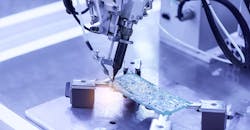Semiconductor Manufacturing Challenges to Be Overcome
Semiconductor chip shortages, and the supply-chain failures related to them, have been in the news for months. Now, even people once unaware of semiconductor manufacturing challenges are likely to know a little about those issues. But knowing about or understanding those problems is not enough: there must be some effort to resolve them. These are some of the obstacles interfering with uninterrupted production.
Time, resources for new factories
Some people wonder why the solution is not simply to build new operations for producing semiconductors. That is one option, but it is not a quick fix. Nina Turner of market intelligence firm IDC said chip factory construction happens on a five-year timeline. It also takes a minimum of $10 billion to build a new chip manufacturing plant.
Even if the investors and regulators agree to proceed to install new capacity, problems may yet prevent construction from completing as expected. Intel will build two semiconductor factories in Ohio — however, the project requires 7,000 workers during an ongoing labor shortage. Many of the people who may otherwise be available are already working on other projects in the area. Those include a biomanufacturing plant, a medical center addition, a hotel, and three data centers.
Officials associated with the Ohio’s labor market say there are not enough additional workers to take on the Intel project. Even so, the early phases of construction are underway, but it is too soon to know whether delays might occur later.
Semiconductor factory construction also can be slowed by unexpected regulatory issues not directly within the developer’s control. That is the case for Wolfspeed, a company trying to build a new chip plant in North Carolina. Numerous violations at the area’s wastewater plant caused officials to issue a moratorium to prevent all new sewer connections, temporarily. That is critical because wastewater processing is a significant part of semiconductor production.
Officials there also indicated that Wolfspeed already applied for some permits concerning its semiconductor factory, but would likely need to submit additional applications, including one for an air-quality permit. All major projects require going through such processes and it inevitably takes time to satisfy regulations and answer any questions about planned operations.
Talent shortage
The semiconductor manufacturing challenges continue once new factories are completed. Many people who use products that rely on semiconductors do not fully appreciate all the specialized talent required to produce those chips. Each semiconductor operations needs professionals who know how to turn raw materials into finished goods, often using specialized equipment like CNC machines.
Chip industry sources report they cannot find enough workers to fill open positions. A related issue is that some of these positions require people with postgraduate degrees, and education-sector sources claim the semiconductor industry is less attractive to students than it once was — many tech students would rather pursue app development and work for Google, it is said. These students also often hesitate to earn doctoral degrees without the assurance of eventually earning high salaries.
Some academic institutions are addressing this issue by forming international partnerships. For example, Purdue University and India’s Indian Institute of Technology Madras will create a dual-degree program related to semiconductors as they work together to create a curriculum that will meet the growing needs of today’s semiconductor manufacturing sector. They also will collaborate on research associated with semiconductors and microelectronics.
Higher salaries and more-appealing benefits packages could be a start in overcoming these semiconductor manufacturing challenges. However, it also will take time to train people in the skills they need to succeed in the sector.
Supply-chain strains
Supply-chain issues have been among the top semiconductor manufacturing challenges to deal with over the past year. The COVID-19 pandemic highlighted how semiconductor suppliers were ill-prepared for shocks, as some manufacturers faced thousands of product shortages per day.
Decision-makers use various strategies to mitigate these impacts, with some depending on artificial intelligence platforms that can help them predict shortages before they happen. Then, they may be able to react in time to prevent supply chain catastrophes.
Many electric-vehicle manufacturers have responded by switching to in-house production for the chips they need. That is one way to handle the supply problem, but it requires significant planning and resources, so it’s not feasible for most manufacturers needing semiconductors. Note, however, that some businesses that have tried this approach realized that in-house production allowed them to design superior chips.
If business leaders want to be on the cutting edge of innovation and can no longer afford the challenges of supply chain shortages, it’s worth considering. Qualcomm — one of the world’s largest chip manufacturers — is working through semiconductor manufacturing challenges with digital transformation and concurrent planning.
Concurrent planning involves linking a manufacturing plan for production in the upcoming few days or weeks to a longer-term sales and operations plan. Businesses typically create sales and operations plans monthly, however doing it more frequently and in response to near-term production goals allows them to have more agility.
Chip manufacturing challenges persist
There is no easy or certain way to solve the semiconductor manufacturing challenges described here. However, the organizations affected by these issues must adopt a forward-thinking perspective and be open to investing in new technologies. That way, they have a better chance of overcoming obstacles and staying resilient.
It is also helpful to learn from experience. Not all strategies will work in the ways that organizational leaders expect – and many may be more successful than originally envisioned. Keeping all the relevant details about what it was like to try new things when confronted with challenges will help manufacturing organizations respond more thoughtfully, effectively, and appropriately in the future.
Emily Newton is the Editor-in-Chief of Revolutionized, an online magazine exploring the latest industrial innovations.
About the Author
Emily Newton
Emily Newton is the Editor-in-Chief of Revolutionized, an online magazine exploring the latest industrial innovations.
